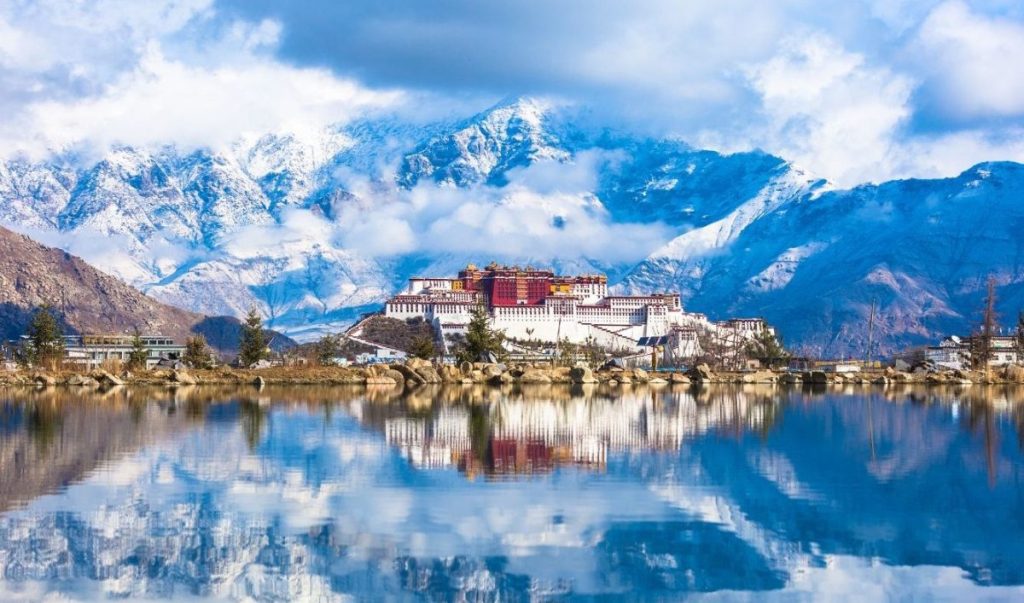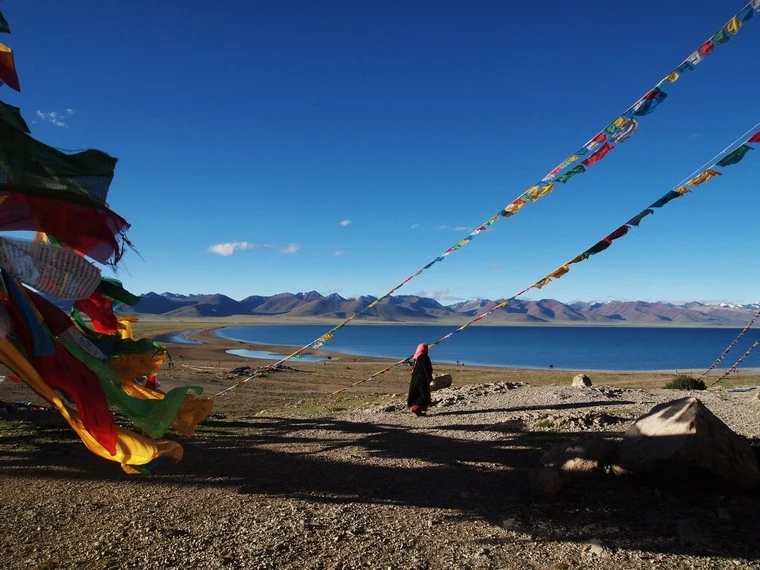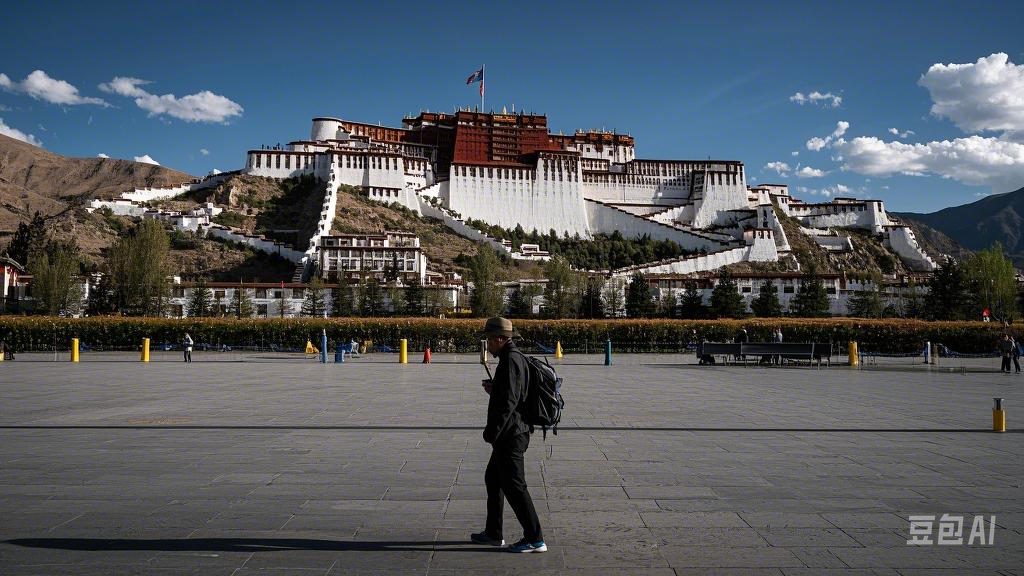From the magnificent Potala Palace to the serenity of Namtso, this Ultimate Lhasa Travel Guide 2025 takes you on an in-depth exploration of the extreme charm of the Roof of the World, as well as the bustling Barkhor Street and the stunning Princess Wencheng immersive theater, while offering tips on altitude acclimatization.
Why is Lhasa worth visiting?
Lhasa, located at an altitude of 3,650 meters above sea level, is known as the “City of Daylight” and is the highest capital city in the world. It is not only the holy land of Tibetan Buddhism, but also a place of natural beauty and humanistic flavor. The golden dome of the Potala Palace and the snowy peaks of Nyingchi-Tanggula Mountain contrast with each other, the murmur of the Buddhist scripture roller and the crispness of the yak bells intertwine to form a moving movement, and the strong fragrance of the ghee tea and the sweetness of the barley wine mesmerize people. According to statistics, Lhasa has attracted more than 26 million visitors in 2024, and has been recognized by Lonely Planet as one of the top ten destinations in Asia worth exploring in depth.

A tour of faith
Potala Palace: The world’s highest palace complex, with 13 floors and more than 2,000 rooms, bears witness to 1,300 years of dynastic history. From the 3,721 kilograms of gold gilding on the Fifth Dalai Lama’s stupa to the special paint on the walls of the White House, it all showcases the wisdom of the Tibetan civilization.After March 14, 2025, the “Winter Tour of Tibet” ticket-free policy will end, so remember to make a reservation for a visit in advance.
Da Zhao Monastery: A symbol of Tibetan Buddhism’s cosmology, the 12-year-old statue of Sakyamuni has been a symbol of pilgrimage for millennia. Early in the morning, you can follow the crowd of meridians around the Barkhor Street, feeling the beautiful picture formed by the fluttering of the scripture streamers under the gilded eaves and the shimmering light on the foreheads of those who kowtow to the long head.
Philosophical dialogues of the three monasteries:
Sera Monastery Sutra Debate: Every day at 3:00 p.m., the red-robed monks intensely debate the Prajna Sutra by high-fiving and stomping their feet, transforming the profound philosophy into body language.
Drepung Monastery Sunshine Buddha: During the Snowdon Festival, 30-story-high embroidered thangkas are slowly unfolded, and tens of thousands of believers recite sutras in unison, a shocking scene.
Ganden Monastery Mystery: At the top of Wangpo Ri Mountain at an altitude of 4,300 meters, the gilded spirit stupa built by Master Tsongkhapa himself still retains the glory of 600 years ago.

A visual feast of highland ecology
Namtso: 240 kilometers away from Lhasa, the sacred lake at an altitude of 4,718 meters, the lake surface is as vast as a mirror. between April and October, the color of the lake water changes from Tiffany blue to malachite green, and the petroglyphs on the shore of the lake and the mani stacks tell the story of the ancient and the modern together.
Lalu Wetland: This is the highest and largest urban natural wetland in the world, attracting many black-necked cranes to overwinter every winter. Wooden stacks weaving through it, you can see the ruddy ducks on the wetland and the golden dome of the Potala Palace reflecting each other.
Qiongmugangga Snow Mountain: Only 120 kilometers from the city, the “Goddess of Wisdom Peak”, with an altitude of 7,048 meters, is a mountain with year-round snow. when the rhododendrons bloom in May, the colorful lake under the forest of ice pagodas reflects a fascinating light, which is the favorite of photographers.
Tibetan Cuisine Exploration
City Cuisine Trilogy:
Bright Harbor Qiong Sweet Tea House: the 1 RMB cup of sweet tea and 3 RMB bowl of Tibetan noodles on the long wooden tables of this century-old store are perfect for experiencing the slow life of Lhasa.
Barkhor Street Yak Meat Patties: The crispy crust is wrapped in wild onions and yak meat, and is served with Mudu chili sauce for a unique flavor.
Tibetan Buns: The 21 folds of Tibetan buns are filled with hot gravy, symbolizing the blessing of the 21 Tulku Mothers of Tibetan Buddhism.
Highland Flavor Restaurant:
Maji Ami: A Tibetan restaurant located next to the Barkhor Street transept, the ghee shiitake mushrooms and barley wine-stuffed dumplings are a memorable experience.
Snowland Restaurant: Yak hotpot with wild matsutake mushrooms is a traditional food for nomadic feasts.
Gonla Meadow Art Dining Bar: Savor Tibetan fried lamb chops in an environment surrounded by thangka murals, and feel the perfect combination of tradition and modernity.
Immersive Cultural Experience
Tibetan clothing travel photography: there are more than 300 travel photography studios in Barkhor Street, offering a full range of styling from Tubo aristocratic clothing to modern modified Tibetan clothing, allowing you to capture the beauty of the Da Zhao Monastery and the meridian alleyways under the lens of a professional photographer.
Princess Wencheng” live epic: in the outdoor theater with a starry sky as the curtain, 800 actors and actresses and 100 warhorses jointly interpret the magnificent history of the marriage between the Tang and the Tombs. The specially designed “Princess Tour” will give the audience a chance to participate in the non-heritage interaction.
Altar Sand Painting Workshop: At the Yoshimoto Heights Art Center, monks use colored sand to build a mandala cosmology. At the end of the puja, the sand paintings are instantly swept away into the river, creating an epiphany of impermanence.
Practical Travel Tips
Adaptation to the plateau: Avoid bathing, drinking alcohol and strenuous exercise when you first arrive at the plateau. Hotels such as Shangri-La in Lhasa provide 24-hour diffused oxygen rooms. Carry glucose oral solution and take the traditional Tibetan medicine Rhodiola Rosea seven days in advance to help you adapt to the plateau environment.
Itinerary Planning
Classic 5-day tour: 1day sunrise on Mount Yakuo, Tibet Museum, 2day Potala Palace, Dazhaosi Temple, Barkhor Street, 3day Sera Monastery, Lopblingka, 4day Namtso one-day tour, 5day Zakir Temple praying for blessings, Tibetan medicinal baths.
In-depth 7-day tour: add Gandan Monastery hiking, Sikinlazo God of Fortune Lake turning lake, “Princess Wencheng” night tour program.
Accommodation Recommendation
Ancient Courtyard Kitchen B&B: remodeled from a 300-year-old Tibetan compound, experience traditional skills such as ghee beating and sutra printing.
Songtsen Lhasa Rinca: Each room has a direct view of the Potala Palace, and the terrace afternoon tea includes Tibetan snacks in a nine-panel grid, so you can enjoy an extraordinary lodging experience.
